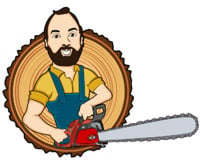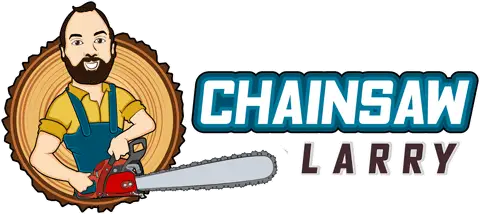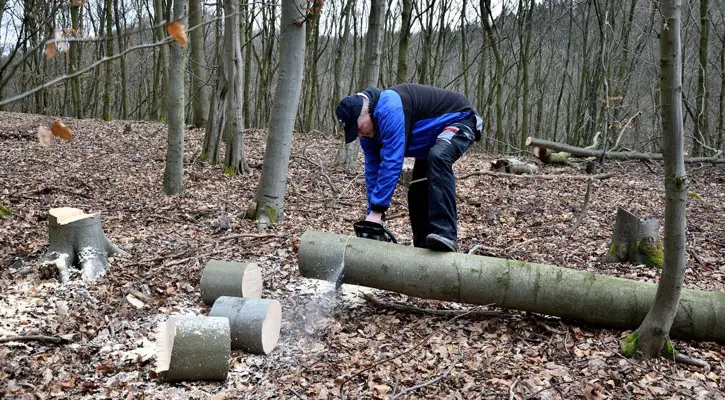Table of Contents
Are you new to chainsaws?
Are you looking for chainsaw tips for beginners?
If so, this guide can help.
Below, I’ll go over the top things every new chainsaw user should know.
The goal is to help you get the most out of your chainsaw experience so you can enjoy any type of wood cutting job.
And, if you’re still in the market for a new chainsaw, be sure to check out my best value chainsaw reviews. That page shows you the top chainsaws for the lowest price.
Additionally, if you want to just browse the best of the best chainsaw are, visit my top chainsaw reviews. It includes the top 10 chainsaws of every type, length, and price.
Chainsaw Tips for Beginners
1. Know Your Chainsaw’s Capabilities
When tackling your wood cutting task, it’s important to know your chainsaw’s limits.
If you’ve selected a smaller model, it’ll be easier to handle but also limit the size of the tree you can cut. You’ll need a larger model with more power if you’re going to try and bring down large trees.
Besides the size of the chainsaw model, another consideration is the length of the bar. Longer bars are used for felling trees and shorter bars are used for branches.
Once you’ve established the limits of your chainsaw and the correct bar size for the task, the most important chainsaw tips for beginners begin with a safety checklist.
- Check that your chainsaw chain has the right amount of tension. Not too tight and not too loose.
- Make sure there are no loose parts or bolts.
- Properly lubricate the chain as per the manufacturer’s instructions.
- Ensure that the teeth and cutting edges are sharp.
- Make sure the area you’ll be working in is free of objects that could potentially get in the way.
- Check that there are no loose branches above your work area that could fall on you.
2. Wear the Right Protective Gear
Before beginning your project, it’s imperative that you wear the proper protective gear.
Accidents can happen and you want to make sure that you’re body is protected against accidental cuts.
This includes:
- safety glasses or goggles
- ear protection
- protective gloves
- protective footwear
- a thick pair of chainsaw chaps
Here are my chainsaw safety gear reviews that include the top products of these kinds.
3. Starting your Chainsaw
Starting up your chainsaw begins with placing your tool on a flat surface far from any gas cans or open fires.
If you have a battery powered chainsaw, make sure the batteries are full but don’t overcharge them as this can reduce the battery life. If you have a gas powered chainsaw, check the fuel level and use environmentally friendly fuels when possible. If you’re using a corded electric chainsaw, ensure that nothing is blocking or laying on the cord.
When you’re ready to start your chainsaw, first pull the choke out completely on gas-powered models, especially in cold weather. Electric and battery chainsaws are not affected by cold temperatures.
Next, make sure the chain brake is engaged. Simply push the chain brake forward until you hear it click. This will stop the chain from spinning if there’s a sudden kickback and will keep you safe as you start your chainsaw.
The next step is to pump the primer. This purges air from the gas line. Push it four or five times to force gas into the carburetor. Then, place your foot into the handle and grip the handle firmly with your left hand. Grasp the starter rope in your right hand and pull it out slowly until you feel some resistance.
After you feel the resistance, simply give the rope a sharp, firm pull. You might need to pull a few times, but between pulls, let the rope slide steadily back into place. Letting the rope snap back into the chainsaw can damage the starter mechanism.
If your chainsaw does not start after a few pulls and you hear the engine turn over but not start, try pushing the choke back in halfway. It should then start after a few more pulls. Once running, depress the throttle briefly to keep the engine running. Some models may require setting the choke to idle. Read your operating manual for more specific starting instructions.
Here are some important safety tips for starting your chainsaw:
- Do not attempt a drop start. This is an advanced technique and increases your risk of injury.
- Always hold the starter rope directly in your hand, never wrap it around your hand.
- Never try to start your chainsaw if the bar is stuck in the wood. There is a great risk for a kickback.
- Always read the safety manual that comes with your chainsaw for any specific issues that may come up.
4. Making Your First Cuts
When you’re ready to cut, begin by holding the machine firmly with both hands. Keep the chainsaw close to you. Plant your feet firmly and spread them apart shoulder width to ensure good balance.
If you’re cutting light material, be cautious of bits and pieces that may become projectiles. On larger pieces of wood, use extreme caution if you have to re-enter a cut. This is when kickbacks can occur.
5. Felling Trees
If you’re felling a tree (i.e. cutting it down), make sure you’re adhering to any local or state laws and regulations.
Avoid cutting in poor weather conditions such as heavy wind, snow, or rain. Make a plan for which direction you want the tree to fall. Clear the area before cutting. Take the wind into account when planning the direction.
Never attempt to cut through a tree at a height above your shoulders. Do your research on how to safely cut through larger trees to ensure you’re following safety protocols.
When you’re finished with your project, be sure to maintain your chainsaw (tips at the end of this guide) since a well-maintained machine will perform better and is important for safely completing your projects.
6. Kickback Safety
Chainsaw kickback is serious and it can happen to anyone; even top professionals.
A kickback is when the chainsaw’s guide bar rotates back towards you at a fast rate. It occurs when the chainsaw chain’s tip nicks a hard object or the chain gets pinched between wood.
As a beginner, you should take the necessary precautions to prevent a chainsaw kickback from happening:
- Always hold the chainsaw firmly with both hands.
- Never cut with the tip of the blade.
- Always test the chain brake before cutting (it could save your life or prevent a serious injury).
- Never cut through wood that’s been used as building materials and may contain hidden nails or other hard objects.
- When re-entering a cut, use extreme caution and go slowly.
7. Chainsaw Maintenance
Proper maintenance is essential to a long-lasting chainsaw. After ever cutting session, be sure to follow these steps:
- Make sure all parts and bolts are tight.
- Top off the bar and chain oil.
- Empty the gas tank if the chainsaw uses fuel.
- Clean off the chain and bar and oil the groove.
- Clean the air filter of sawdust.
- Oil the chain before storing the chainsaw.
Picking the Best Budget Chainsaw
Now that you know how to to use a chainsaw as a beginner, you may be wondering which chainsaw to buy.
If that’s the case, be sure to visit my best value chainsaw reviews to find a good starter chainsaw. Once you’re comfortable with the craft, you may want to upgrade.
You might also like my battery chainsaw reviews, gas chainsaw reviews, and electric chainsaw reviews.
I hope this guide on chainsaw tips for beginners was helpful.
Happy sawing!

Your pal,
Chainsaw Larry

